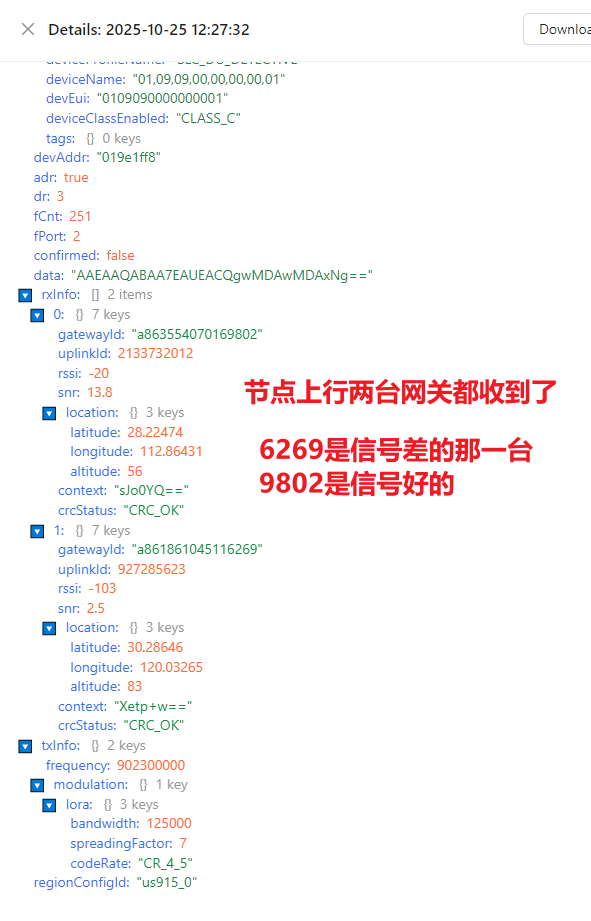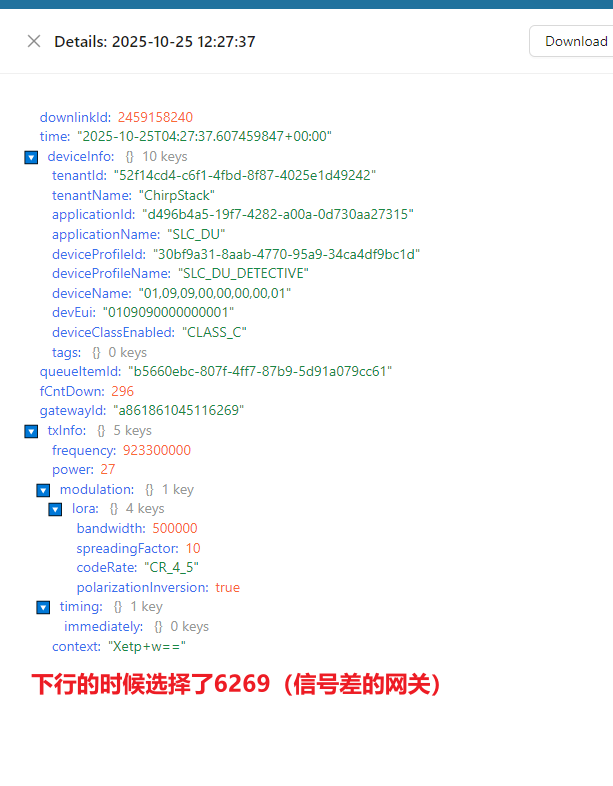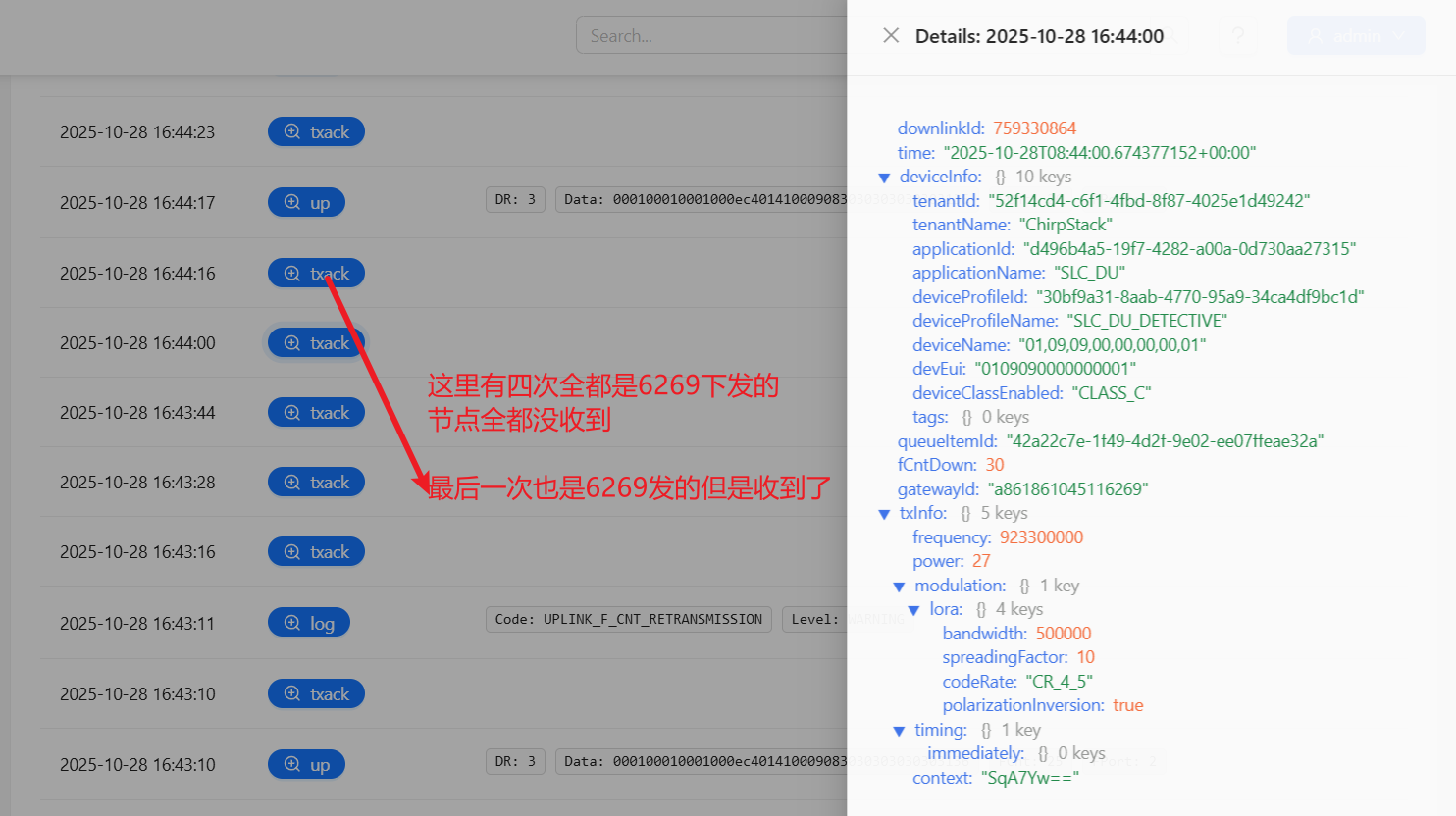A LoRa node is connected to two gateways, one with good signal and the other with poor signal. However, when the chirpstack transmits data downward,** it selects the gateway with the poorer signal for the downward communication.** According to common sense, the gateway with the better signal should be chosen for the downward transmission. Is this related to the configuration of the server?


Chirpstack selected the gateway with a weaker signal for the downlink transmission.
2 Answers
I think this is expected behavior. Above a certain link-margin, ChirpStack will select a random gateway for the downlink (to avoid that all downlinks will go through a single gateway, e.g. if this gateway has a better antenna) and to distribute the downlink load. I believe the default margin is 10.
Your uplink is SF7, and worst SNR is 2.5. The min. required SNR for demodulating SF7 is -2.5. So this means there is still a margin of 10.
However, when I use two gateways, if the node selects another gateway with a poor signal, it will cause my node to fail to receive the messages sent by this gateway with poor signal. This will result in frequent packet loss for my node. I would like to know how chirpstack selects gateways. Is there any algorithm? Or is it that, when the node transmits data, as long as any gateway receives data from the node, chirpstack will consider this gateway as valid and randomly send data to the node from among these gateways that have received the node's data?image.png